The search is over, and looking at these images, no wonder it was so hard to find the little Philae lander!
The high-resolution camera on board the Rosetta spacecraft has finally spotted Philae “wedged into a dark crack on Comet 67P/Churyumov-Gerasimenko,” the ESA team said. They also said that now, seeing the lander’s orientation, it’s clear why establishing communications was so difficult following its landing on November 12, 2014.
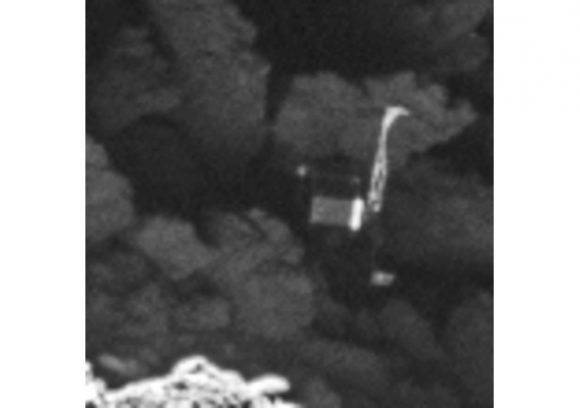
Rosetta, orbiting the comet and getting ready for its own demise/touchdown on 67P, focused its OSIRIS narrow-angle camera towards a few candidate sites on September 2, 2016 as the orbiter came just 2.7 km of the comet’s surface. Clearly visible in the zoomed in versions are the main body of the lander, along with two of its three legs.
“With only a month left of the Rosetta mission, we are so happy to have finally imaged Philae, and to see it in such amazing detail,” says Cecilia Tubiana of the OSIRIS camera team, the first person to see the images when they were downlinked from Rosetta on September 4.
Tubiana told Universe Today via email that Philae wasn’t too hard to find in the images. “Philae was in hiding in shadow, and as soon as we stretched the brightness to ‘see’ into the shadow, Philae was there!”
She added that nothing else about Philae’s condition has been revealed from the images so far.
The Philae lander was last seen after it first touched down at a region called Agilkia on the odd-shaped, two-lobed comet 67P. During its dramatic touchdown, the lander flew, landed, bounced and then repeated that process for more than two hours across the surface, with three or maybe four touchdowns. The harpoons that were to anchor Philae to the surface failed to fire, and scientists estimated the lander may have bounced as high as 3.2 kilometers (2 miles) before becoming wedged in the shadows of a cliff on the comet. After three days, Philae’s primary battery ran out of power and the lander went into hibernation, only to wake up again and communicate briefly with Rosetta in June and July 2015 as the comet came closer to the Sun and more power was available.
But after more than a year of silence, the Rosetta team announced in mid-August 2016 that they would no longer attempt communications with Philae.
Philae’s final location had been plotted but until yesterday, never actually seen by Rosetta’s cameras. Radio ranging data was used to narrow down the search to an area spanning a few tens of meters, and a number of potential candidate objects were identified in relatively low-resolution images taken from larger distances.
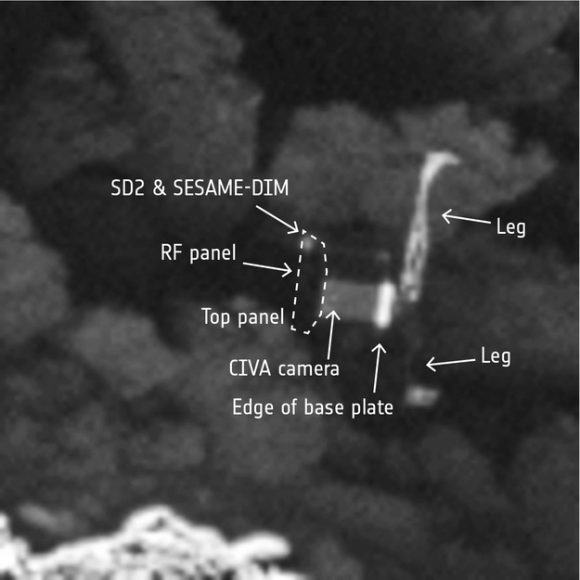
Compare some of the features of the cliff in the image above to this image taken by Philae of its surroundings:
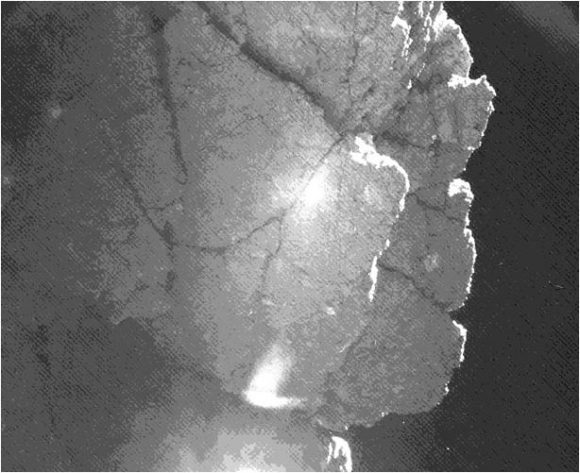
“After months of work, with the focus and the evidence pointing more and more to this lander candidate, I’m very excited and thrilled that we finally have this all-important picture of Philae sitting in Abydos,” said ESA’s Laurence O’Rourke, who has been coordinating the search efforts over the last months at ESA, with the OSIRIS and SONC/CNES teams.
At 2.7 km, the resolution of the OSIRIS narrow-angle camera is about 5 cm/pixel, which is sufficient to reveal features of Philae’s 1 m-sized body and its legs.
“This wonderful news means that we now have the missing ‘ground-truth’ information needed to put Philae’s three days of science into proper context, now that we know where that ground actually is!” says Matt Taylor, ESA’s Rosetta project scientist.
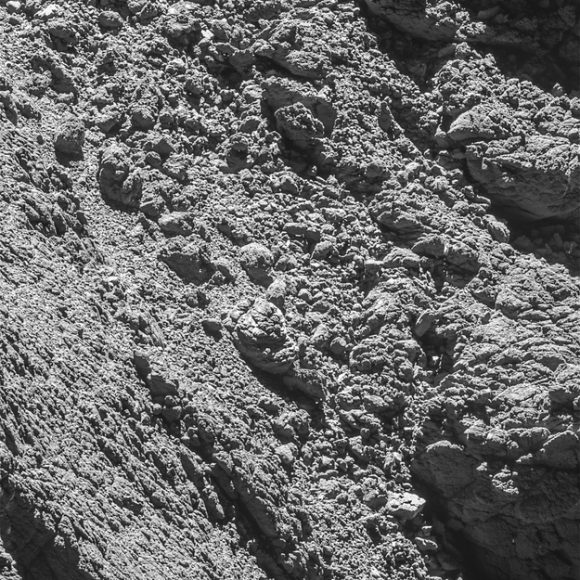
The discovery comes less than a month before Rosetta descends to the comet’s surface. On September 30, the orbiter will be sent on a final one-way mission to investigate the comet from close up, including the open pits in a region called Ma’at, where it is hoped that critical observations will help to reveal secrets of the body’s interior structure.
“Now that the lander search is finished we feel ready for Rosetta’s landing, and look forward to capturing even closer images of Rosetta’s touchdown site,” adds Holger Sierks, principal investigator of the OSIRIS camera.
The Rosetta team said they would be providing more details about the search as well as more images in the near future.
Source: ESA

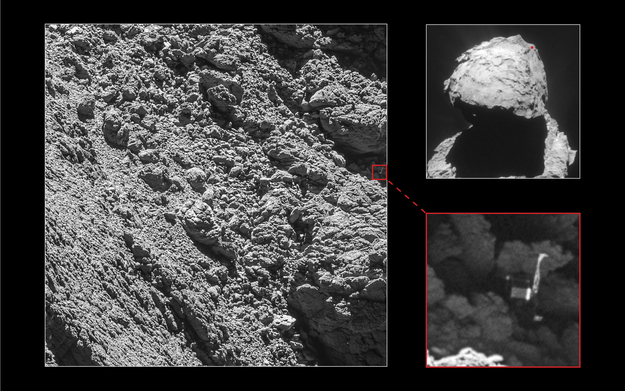
Looks like the darkest place on the comet.
I donno.. it still seems rather inconceivable to me that the ESA/Rosetta team so grossly underestimated the ‘reflex’ action of the landing. Could there have been another factor? Say.. a buildup of repelling tribo electric charges?